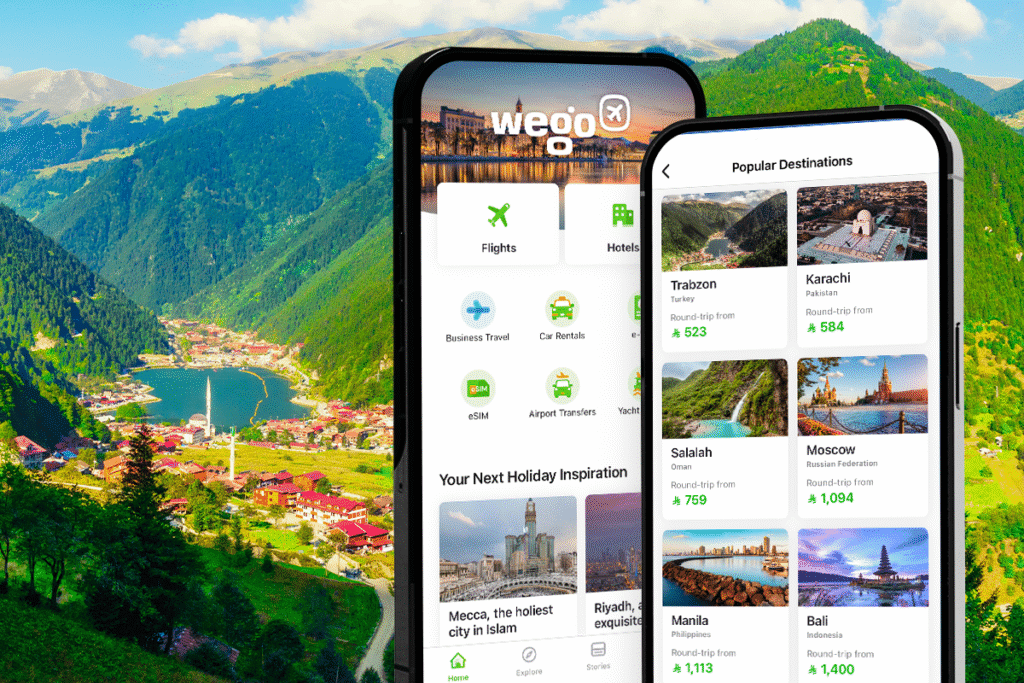Saudi travellers are reshaping regional travel patterns, with new data from Wego revealing a sharp rise in both international and domestic bookings over the summer 2025 season.
Hotels captured 37.3% of international accommodation choices and more than half of domestic stays, underscoring a clear preference for comfort and consistency — even as destination choices diversify.
The findings reflect a broader shift in traveller behaviour, with Saudis increasingly blending leisure, family visits, and short-haul escapes into their seasonal plans. For travel managers and hospitality leaders, the data offers a timely snapshot of where demand is rising — and why.
New Routes to Relevance
Assiut in Egypt and Kathmandu in Nepal led the charge among international destinations, with triple-digit growth in searches and bookings. Assiut saw a 106% rise in interest and a 162% jump in confirmed stays, while Kathmandu’s growth was driven in part by expatriate travel, with bookings up nearly 30%.
Closer to home, nature-rich destinations like Najran, Al-Baha, and Abha saw strong domestic momentum. Najran recorded a 57.5% increase in bookings, while Al-Baha posted a 47.39% rise in average rates — the highest domestic price growth of the season. These upland cities are benefiting from improved infrastructure and a growing calendar of cultural and outdoor events, making them attractive for short breaks and incentive travel.
Price Sensitivity Meets Premium Preferences
While some destinations saw price drops — notably London, where average rates fell 22% to USD 350 — others surged. Sharm El Sheikh posted the steepest increase, with nightly rates climbing 33% to match London’s premium. Salalah, Oman also saw a 12% rise, reinforcing its appeal as a seasonal “Khareef” escape.
Domestically, highland cities like Abha and Al-Baha saw average rates hover around USD 157, with year-on-year increases of 15.78% and 47.39% respectively. These figures suggest travellers are willing to pay more for cooler climates and curated experiences, especially when visa-free and logistically simple.
Hotels Hold Their Ground
Despite the rise of alternative accommodations, hotels remain the dominant choice for Saudi travellers. Internationally, 5-star properties accounted for 37.3% of bookings, while domestically, 4- and 5-star stays made up just over half. Aparthotels and resorts also performed well, but the preference for full-service comfort — especially on short-haul trips — remains strong.
Strategic Implications for the Travel Sector
The data points to a more informed, experience-driven traveller — one who balances price, convenience, and novelty. For travel buyers, DMCs, and hospitality brands, this means rethinking how packages are positioned and how destinations are marketed. The rise in domestic travel also aligns with Saudi Vision 2030’s goals to boost internal tourism and diversify the economy.
Wego’s role in this shift is notable. By offering smart booking tools and personalised recommendations, the platform is helping travellers navigate a growing landscape of options — and helping suppliers connect with a more discerning audience.
As the season turns, the message is clear: Saudi travellers are exploring more, spending smarter, and expecting better. For the business travel sector, that’s both a challenge and an opportunity.


